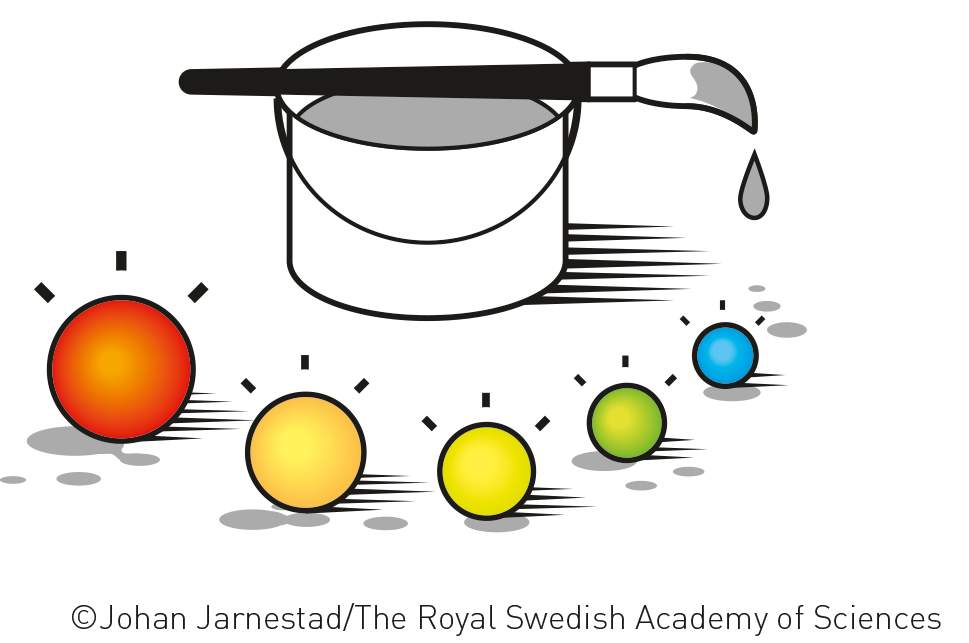Moungi Bawendi, Louis Brus, and Alexei Ekimov share the 2023 Nobel Prize in Chemistry.
The highest prize in chemistry has been awarded today to three scientists who pioneered research into quantum dots – semiconductor nanocrystals measuring a few nanometres, with applications ranging from solar cell technology to medical imaging.
Moungi Bawendi (MIT, USA), Louis Brus (Columbia University, USA) and Alexei Ekimov (Nanocrystals Technology Inc, USA) were announced as the joint recipients of the Nobel Prize in Chemistry by the Royal Swedish Academy of Sciences this morning.
Ekimov, a Russian solid-state physicist, was the first to synthesise quantum dots in a glass matrix, in 1981; while Brus, an American chemist, became the first to do so in a colloidal suspension in 1983.
Bawendi, an American chemist of French-Tunisian descent, developed the rapid injection method – the most widely used method for quantum dot synthesis – with his research group in 1993.
‘For a long time nobody thought you could ever actually make such small particles,’ Johan Aqvist, the chair of the Academy’s Nobel committee for chemistry, said at a news conference announcing the 2023 laureates.
Announcing the winners at a desk with five colourful flasks containing quantum dots in a liquid solution, he said: ‘This year’s laureates succeeded.’
Dialling in to the live conference, Bawendi described his reaction to the award as ‘Very surprised, sleepy, shocked, unexpected, and very honoured.’
The names of the three laureates were accidentally leaked earlier in the morning, although Bawendi confirmed that he had not been informed. ‘I was awakened by the Swedish academy – I was sound asleep!’
Asked about the applications of quantum dots, Bawendi noted, ‘They are already widely used as colour downshifters in the display industry, and as biological tags [...] The world will see in the future where it will go – it’s hard to say at the beginning.’
When asked about the implications of awarding a Russian scientists the Prize, in light of the current war in Ukraine, panelist Hans Ellegren responded:
‘We identified the most important contributors to those findings, without paying any respect to nationality or any other factors [...] Nationality doesn’t matter here, and that’s in accordance with the will of Alfred Nobel.’
One of the most important properties of quantum dots is their ability to emit light of different colours depending on their size. When a quantum dot is illuminated by light, it can absorb a photon and excite an electron to a higher energy level.
When the electron falls back to its ground state, it emits a photon of light. The wavelength of the emitted light depends on the size of the quantum dot. Larger quantum dots emit longer wavelength light (red), while smaller quantum dots emit shorter wavelength light (blue).
Imagine a ball in a box. The larger the box, the more freedom the ball has to move around. But if the box is very small, the ball will be confined to a very small space.
Similarly, the electrons in a quantum dot are confined to a very small space. This confinement causes the electrons to have different energy levels than they would in a larger piece of material. The wavelength of the emitted light depends on the energy difference between the two energy levels.
By controlling the size of the quantum dot, scientists can control the energy difference between the two energy levels. This means that they can control the colour of light that the quantum dot emits – but many other properties of the quantum dot's behaviour can be affected and manipulated by changing its size.
Dr Gilles Georges, Vice President and Chief Scientific Officer at CAS, said:
‘Moungi Bawendi, Louis Brus, and Alexei Ekimov have done highly impactful work on the discovery and synthesis of quantum dots. The unique quantum mechanical properties of these nanoscale wonders are finding applications today in fields like biomedical imaging and energy-efficient LED displays, but we are also seeing significant emerging research advancing fields such as sustainable energy and consumer electronics including making solar cells more efficient, more flexible, and less expensive to manufacture which will usher in a brighter and more sustainable future.’
The Swedish academy notes: ‘Researchers believe that in the future quantum dots can contribute to fexible electronics, miniscule sensors, slimmer solar cells and perhaps encrypted quantum communication.
‘One thing is certain – there is a lot left to learn about amazing quantum phenomena.’




